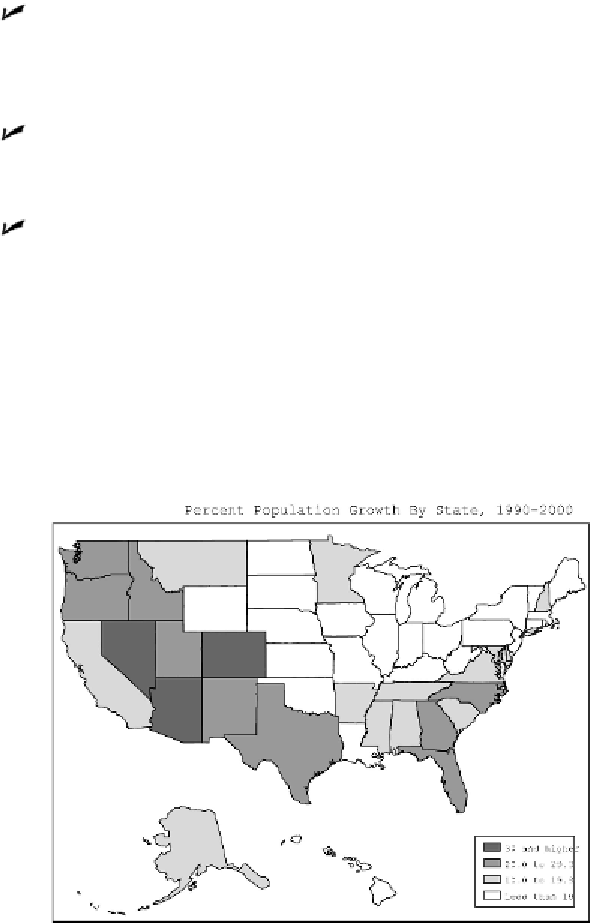Geography Reference
In-Depth Information
A rise in employment opportunities (pull factors) in the southern tier (and the southeast in
particular) as businesses moved in to take advantage of the region's comparatively low wages,
low taxes, and low energy costs (which also attract of their own accords good numbers of im-
migrants)
A related rise in unemployment (a push factor) in the Northeast and Upper Midwest (due
to the closure of numerous heavy industrial plants in the traditional manufacturing belt) and
the desire and willingness of the jobless to relocate where jobs are available
The attractive outdoor amenities and recreational potential (pull factors) associated with
the climate, beaches, landscapes, and open spaces of parts of the South and West
Normally, one thinks of growth as a good thing. But some high population growth areas are now vic-
tims of their success at attracting migrants. Most of the 25 fastest growing cities in the U.S. are in the
Sunbelt or West, where the imagery of open space and the great outdoors has met with traffic jam and
urban sprawl (see Figure 12-3.) Other areas have witnessed a growing disparity between the need for
water and the supply of it. Primary examples are California, Arizona, and Florida, where thirsty cities
and even thirstier agriculture are increasingly pitted against each other.
Figure 12-2:
U.S. population
growth by state,
1990-2000.



